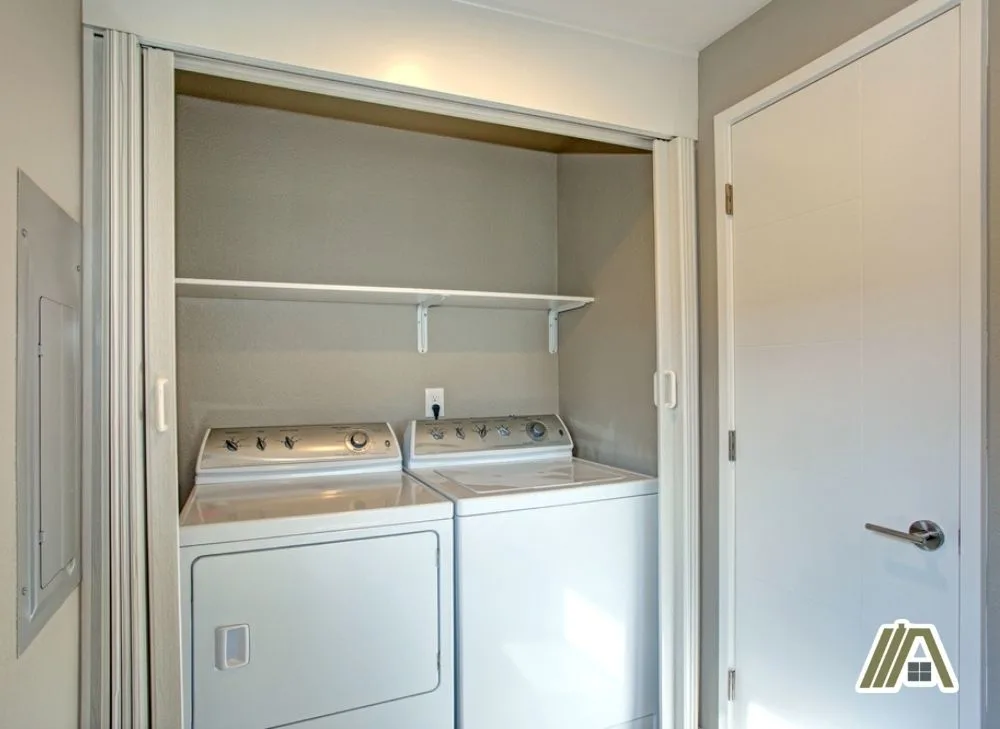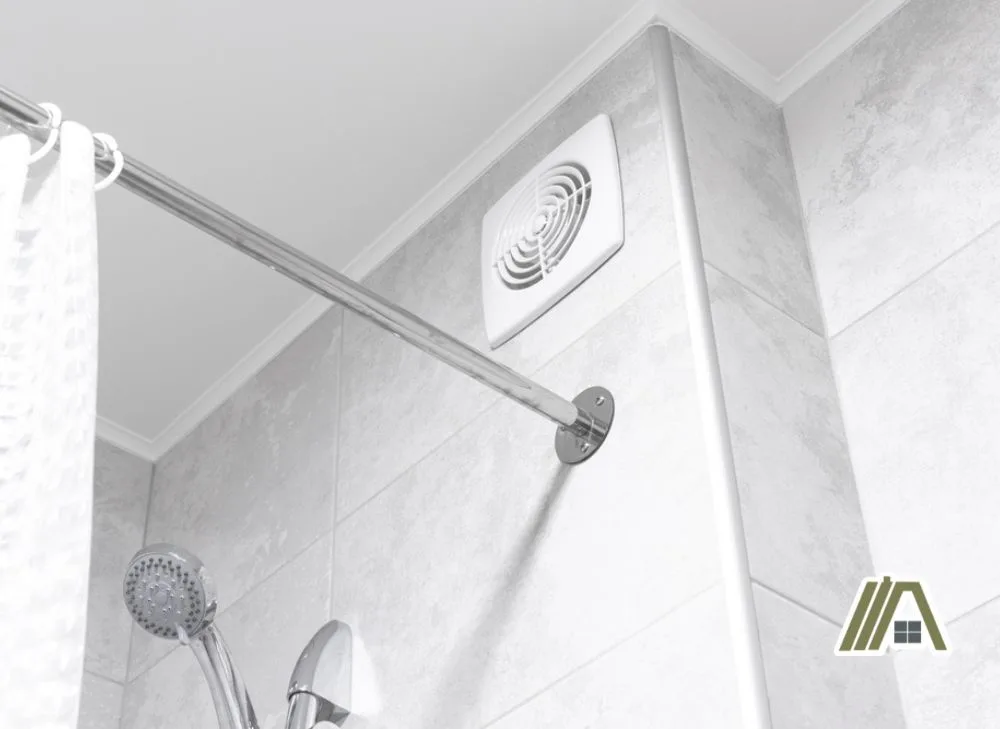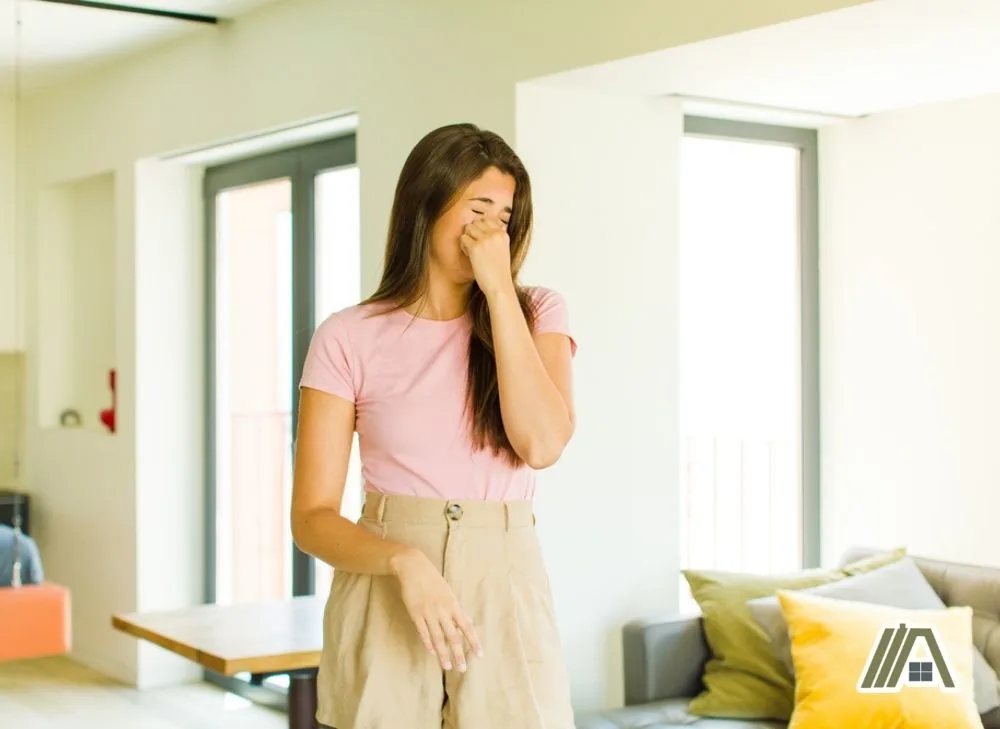Makeup air units are often fundamental parts of an appliance-heavy room. They provide the important function of pushing an equal amount of fresh air into a room that an exhaust system is pushing out. This helps prevent depressurization.
The effects of depressurization can be annoying but they also have the potential to become seriously bad for your health. But when do exhaust systems become big enough to require makeup air and how much is required? We answer these questions and more below.

There’s no makeup air sizing guide. The IRC gives guidelines for range hoods and dryers; makeup air is required for systems rated 400+ CFM and 200+ CFM, respectively. Beyond that, if exhaust interferes with appliance function or causes negative effects, makeup air is needed and must match the exhausted air.
Not All Exhaust Systems Need Makeup Air
The primary purpose of makeup air units is to prevent depressurization from occurring in your home. Depressurization is when the internal air pressure falls below the external air pressure and it has a variety of bad repercussions.
A very strong exhaust system can remove air at a faster rate than the amount of air naturally entering. This is where makeup air systems come into play and replace the air at the same rate that is being expelled.
However, if your exhaust system is weaker, then it will expel air slowly enough that depressurization won’t occur. Therefore, a makeup air system is not necessary.
This is especially true if your room is not built to be weathertight. If there is infiltration, where air is able to seep in through cracks in the building, then makeup air may not be necessary. This is because enough air is able to flow into the room as the amount of air leaving.
Building Codes Outline Some Figures
The International Residential Code (IRC) gives two figures; one for dryers and one for range hoods.
They also give general rules like the exhaust system cannot interfere with gas appliance functioning and if a combustion appliance is supplied with combustion air solely by mechanical means, then makeup air must be provided for any exhaust systems that are present.
Dryers
The IRC sets the following regulations for dryer exhaust system makeup air:
“Installations exhausting more than 200 cfm shall be provided with makeup air.”
Section G2439.5
They go on to specify that if your dryer is installed in a closet, then you must provide an area of 100 square inches or more for makeup air.

Depending on the type of dryer and how efficient it is, you may not need to install a makeup air unit for your laundry room.
This is because dryers will typically range from around 100 to 250 CFM, meaning that there is a good chance that your dryer falls below the minimum of 200 CFM.
Kitchens Exhaust Systems
The IRC (Section M1503.6) outlines the following criteria that a kitchen needs to satisfy before a makeup air system is required for range hoods.
- The kitchen has a fuel-burning appliance.
- The appliance uses an exhaust system and is not direct-vented or uses a mechanical draft venting system
- The exhaust system exhausts more than 400 CFM.
Gas-burning ovens and ranges are coming back into fashion. This satisfies the first condition. However, it must vent combustion gases in a specific way to satisfy the second condition.
Direct-vented appliances or appliances with mechanical draft venting systems keep the combustion air supply and exhaust completely separate from the kitchen air, which means that the removal of air by the range hood cannot impact these processes, making the need for makeup air less urgent.
If, however, you have any other type of fuel-burning appliance and the range hood has an exhaust capacity of 400 CFM or more, then you do need makeup air.
This is the point at which it has been determined that infiltration air is not sufficient to handle the pressure deficit.
These days, it is likely your range hood will be 400+ CFM because domestic ranges are larger on average.
Bathroom Exhaust Fans Don’t Need Makeup Air
The three most common exhaust systems in the home are dryers, range hoods, and bathroom fans. We have covered the first two, so let’s take a look at the last.
Unlike the previous two, bathroom exhaust fans are not likely to require makeup air. This is for a couple of different reasons.

For one, bathroom fans rarely exhaust enough air to cause significant depressurization, meaning they would have no use for a makeup air unit.
However, there is no limit on the CFM rating for a bathroom fan. This is because, compared to a kitchen or laundry room, bathrooms are often much smaller and could, therefore, easily draw air from adjacent rooms.
In addition, bathrooms rarely ever contain fuel-burning appliances that can be adversely affected by depressurization. Therefore, the amount of air exhausted is not going to be significant enough to require a makeup air unit.
How Much Makeup Air is Needed?
The amount of makeup air is dependent on how much air is exhausted. As soon as makeup air becomes necessary in a room, you need to provide as much air as is removed.
In addition, it is important to look at exhaust systems separately. This means that you need to look at your kitchen and laundry rooms individually when deciding whether or not you need a makeup air unit. You would not be able to combine the makeup air requirements and install one larger makeup air unit.
This is because the correct amount of air has to be provided to the room in which the exhaust system is located or in a directly-connected room with sufficient openings between it and the room containing the exhaust system.
If your makeup air unit is in a separate room, then it would not be able to properly supply air to the room that requires it, meaning that depressurization would still occur.
Now, it may seem pretty simple. If 400 CFM is exhausted, the makeup air unit should provide 400 CFM, right?
Well, not necessarily. All houses have some level of infiltration. This is what remedies the pressure imbalance created by smaller exhausts. Just because it is no longer sufficient at higher ratings does not mean that its effects can be discounted.
Infiltration can provide a portion of the required makeup air so that you would only need to supply the difference to make up the full exhaust rate.
Unfortunately, determining the level of infiltration needs to be done professionally.
Determining if Makeup Air Is Required
Outside of code requirements, makeup air is sometimes required in certain situations.
Signs
- Struggling exhaust systems: A lower pressure can cause your exhaust system to work harder to expel the same amount of air. Therefore, a struggling exhaust system may indicate a pressure-related issue.
- Drafts: It is likely that air is entering your home through cracks or crevices due to the pressure in a room being lower than that outside, drawing air into the room.
- Noisy drains: If the air in your pipes becomes depressurized, then the efficiency of the drain is impacted, which also causes it to produce noise.
- Bad odors in the house: If your house is starting to smell bad, it is possible that exhaust fumes and sewer gases are being drawn back into the home to compensate for a lower pressure in the house.

- High utility bills: Similarly to a struggling exhaust system, low pressure causes exhaust systems to work much harder, in turn, contributing to a higher utility bill because the system uses more energy.
- Function of fuel appliances is affected: Fuel appliances may not be able to function properly because there is a lack of oxygen in the room.
You can find more detailed information in my article on Signs Your House Needs (more) Makeup Air.
Professional Assessment
If you believe there is an issue with your ventilation it is typically recommended to contact a professional for an assessment.
Usually, you would reach out to a general contractor to make sure that your ventilation systems are running properly.
Another option would be to reach out to a contractor specifically trained in HVAC systems. With more experience in ventilation, they would likely be able to more quickly identify the problem.
A contractor will typically take a look at the system to diagnose the issue before providing a solution.
Pros
There are many pros to hiring somebody to assess your ventilation.
For one, you can guarantee that it will be done properly. When DIY-ing any ventilation issue, many things can go wrong. Therefore, having it done by someone with years of experience is much more reliable.
With experience, a professional is going to be much more accurate with their assessment as well. What may appear to be a makeup air problem can also be an entirely different issue that they would be able to identify.
Another benefit is that a professional would be able to fix the issue as well as identify it.
It is very important that ventilation systems are working properly in addition to makeup air systems. With a professional, you can guarantee that it is going to work as intended and properly, which is something you cannot guarantee if you were to fix it yourself.
Cons
Overall, the only real drawback to hiring a contractor to inspect and install makeup air is that it is going to be a bit expensive.
However, this drawback is mostly negated when considering the benefit of having a properly working ventilation system in your home.
In addition, it could also save you money in the long run if your utility bill has risen due to the lack of makeup air in your house.
And don’t forget that makeup air can save your life!
Sources
https://homedetoxing.com/how-many-cfm-does-a-dryer-exhaust/
https://meetflo.com/blogs/flo/common-reasons-for-noisy-pipes
